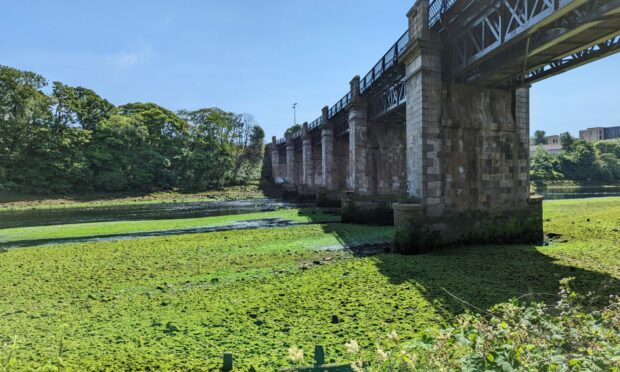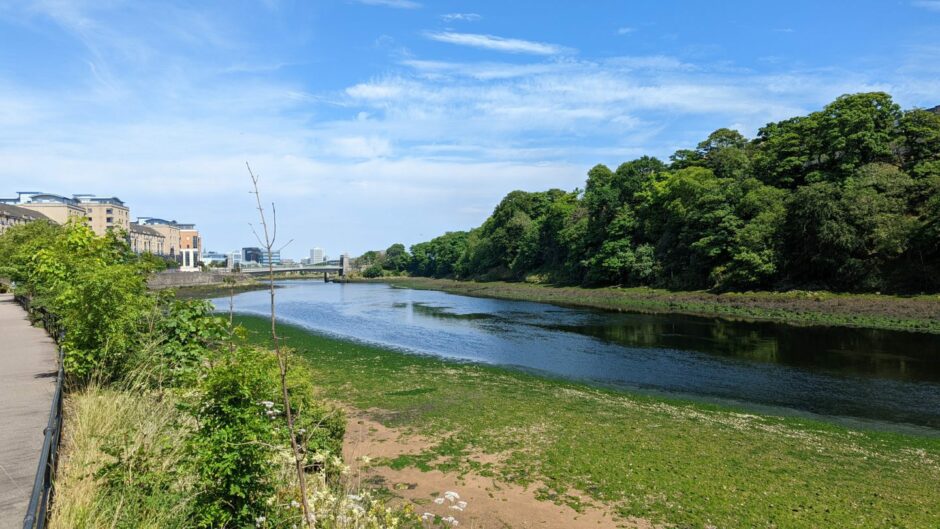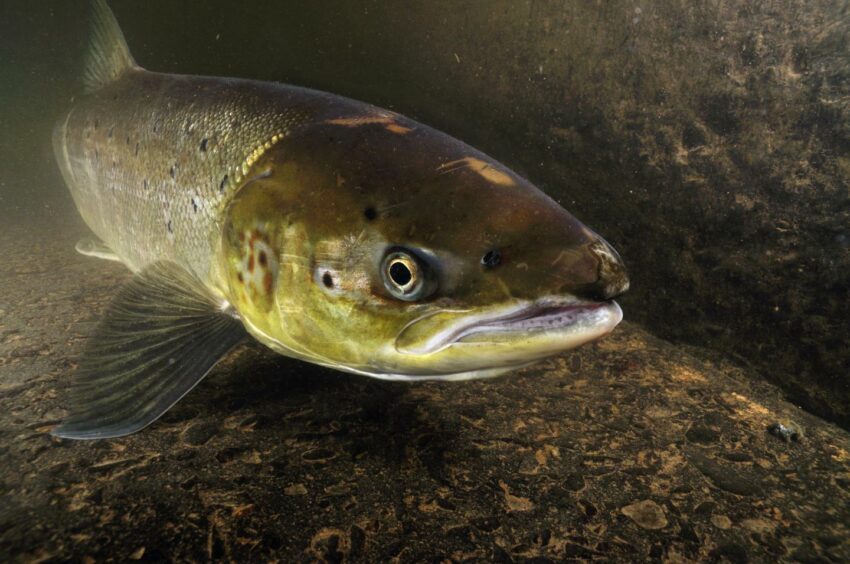If you’ve driven past the River Dee recently you might have spotted that water levels are looking particularly low.
A typical low for this river would be a depth of about 0.65m, however the current depth (as measured at Garthdee) is nearly 10cm lower than this at 0.54m.
It is a similar story for the river elsewhere; at the Polhollick measuring site near Ballater the river depth is just 0.37m.
River Dee water levels putting salmon in hot water (literally)
A shallow, slow-moving river combined with long sunny days means that the water of the Dee gets the chance to heat up more than usual.
Its average summer water temperature is around 13C, but in recent years certain tributaries have been known to reach up to 27.5C.
This might be good news for humans going swimming, but it’s bad news for river life.
“The combination of low river levels and high temperatures is bad for salmon in particular,” said Lorraine Hawkins, director at the Dee District Salmon Fishery Board, “they are cold water fish after all.”
“It means low oxygen levels in the water, high stress levels, risk of disease and potentially lethal effects if high temperatures continue.”
It might not be spawning season (when disruption to salmon populations can have a huge impact on their breeding) but Lorraine and her colleagues are particularly concerned for the health of the river’s youngest fish.
“We’ve stopped our juvenile fish surveys today and tomorrow because it’s too hot to be catching and handling small fish,” she said.
Water shortages in our future?
Last week the Scottish Environmental Protection Agency (Sepa) issued a warning over the Dee’s water level.
It moved from “alert” to “moderate scarcity”, which is the second highest ranking after “significant scarcity”.
It was moved into this new category due to the fact that river levels have been consistently low for the last three months.
“The conditions are concerning to us, and in particular it’s our thoughts for the future as summers are likely to get even hotter and drier,” Lorraine said.
“We are tackling the high temperatures by planting trees along riverbanks to provide cooling shade, but the low river levels are a concern that has not adequately been addressed yet.
“The Dee provides the water supply to Aberdeen City, so water is taken out of the river every day regardless of how much water is in the river.
“There needs to be consideration to storing water in the catchment – so winter rainfall can alleviate summer shortages.”
You may also like:
-
How does the current heatwave compare to top temperatures ever recorded in Aberdeenshire, Moray, Highlands and Islands?
-
Scotland’s wild salmon crisis: Why warming rivers and hydropower could be to blame for ‘devastatingly’ low stocks
-
‘There may be no wild salmon left to save’: Concerns over the River Dee’s depleted salmon stocks



Conversation